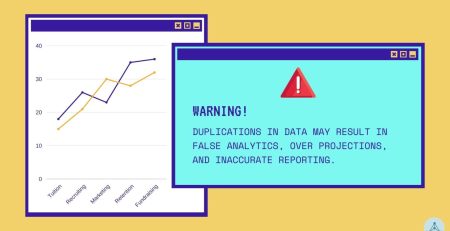The Most Popular Types of Financial Fraud Colleges and Students Face
The Identity Theft Resource Center (ITRC) claims that cybercriminals, including scammers, hackers, and social engineers, have gotten smarter thanks to the influx of advanced tech solutions. As a result, colleges and students are at great risk of being victims of financial fraud.
These malicious activities could affect colleges’ bottom line, reputation, and student lifecycle management. Similarly, for students, these activities could affect their careers and future in different ways.
In this post, we’ll share the most common financial frauds in the education sector and how AMSA Connect’s Student Application Fraudulent Examination (S.A.F.E) can help boost cybersecurity to make both parties less vulnerable to online predatory behavior.
6 Types of Financial Fraud Colleges and Students Face in the Digital Age
1. Fraudulent Student Applications
Fraudulent student applications are one of the fastest-rising types of financial fraud colleges face in the post-pandemic digital age. In 2022, the New York Times reported over 60,000 fake applications in California alone, resulting in hundreds of millions of dollars in false approvals.
AMSA’s AI-enhanced fraud detection solution is among the most popular innovations colleges adopt to identify and eliminate fraudulent and suspicious activity on their on-campus management systems. It offers multiple Cybersecurity features that allow institutions to become more alert and responsive when managing silos of student application data.
2. Scholarship and Financial Aid Scams
Another popular scam emerging online is a fake scholarship and financial aid awards. Thousands of students get called every year by malicious criminals. These criminals inform them they have recieved a scholarship and need to provide their bank account information to transfer the money.
In most cases, these scholarships don’t exist, and the callers are simply looking to get students’ personal information
3. Identity Theft
Identity theft is one of the oldest scams in the digital industry. However, criminals are now targeting educational institutions for this purpose. As a result, data breaches and phishing attacks have grown off the roof, with information being sold on the dark web.
Due to these activities, students and college departments can lose access to important accounts, including bank/credit card accounts and payroll systems. Moreover, students and employees could be arrested for crimes they didn’t commit.
4. Non-Existent Student Essentials and Services
Modern cybercriminals are smarter and much more creative than their counterparts. They understand what college students want – books, apartments, food, moving services, etc. More importantly, they know that students are also looking for the best deals due to higher living costs and tuition fees.
Hence, they lure them by creating fake ads based on their needs and offer great prices under one condition – pre-payment. Unfortunately, thousands of students fall victim to this fraud and never receive their goods or services.
5. Public WiFi Fraud
Public WiFi networks have become incredibly common around college campuses to help students access books, learning management platforms, and other sites or applications. However, these networks make students and employees more susceptible to fraud since hackers have the tools and expertise to hack public routers.
Once they get access, they can scan all data passing between it and user devices. For instance, they can access emails, bank accounts, and other important digital touchpoints.
6. Malware Attacks
The rapid shift to remote learning and digitalized administration processes has led to a sharp increase in malware attacks as many users access unsecured networks to join classes or share information.
Since the education industry was among the newest industries to transition online, it became the biggest target for Cybersecurity threats, especially for traditional colleges with limited IT resources.
Conclusion
The education industry is rapidly evolving with the influx of new technologies, practices, and norms. As a result, colleges and students need to take additional steps to protect their information and accounts from different types of financial fraud.
While hundreds of solutions exist for malware attacks, identity theft, and other similar issues, fraudulent applications remain a growing problem. Thus, AMSA Connect aims to solve this particular problem by equipping colleges with a one-of-a-kind solution that provides multiple layers of protection via AI and ML-enhanced fraud detection, notification, and eradication.
S.A.F.E is the world’s first solution designed specifically for real-time fraud detection for student applications. So, get in touch with our team immediately and let us equip your IT infrastructure with this game-changing technology.
Interested in learning more? Check out these blogs below:
- How ChatGPT is threatening colleges and universities
- S.A.F.E. the Ultimate Applicant Fraud Prevention Solution for Colleges and Universities
- College Admissions Fraud: The Deeper Truth
- Enhancing Academic Integrity: How S.A.F.E. Safeguards Colleges and Universities Against Fraudulent Applications
- Safeguarding Higher Education: The Imperative of S.A.F.E.











Leave a Reply